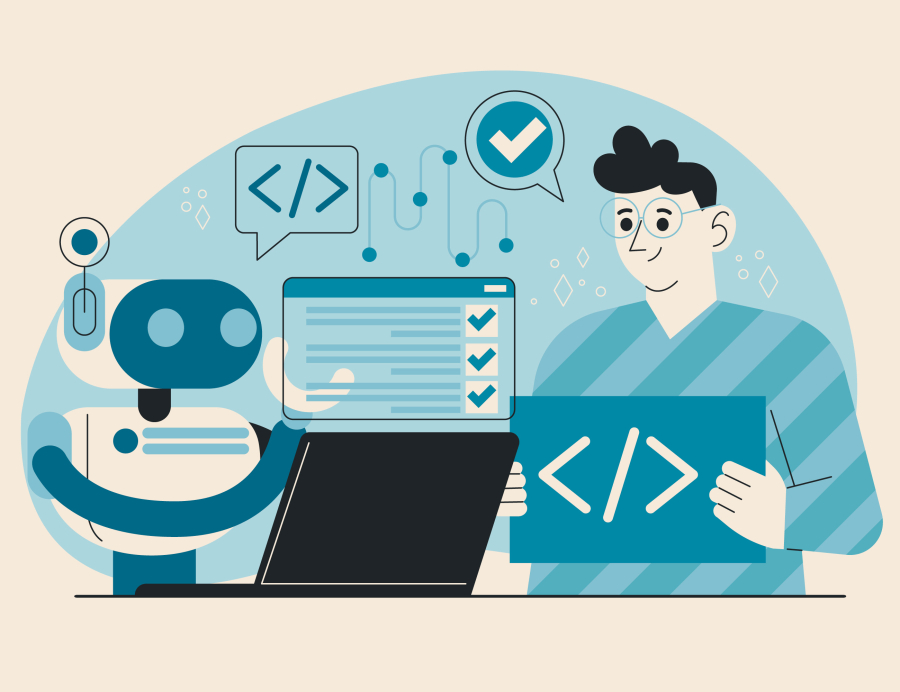How to Build a Modern UI with HTML, CSS, and JavaScript
In today’s fast-paced digital world, having a modern, sleek, and user-friendly UI (User Interface) is crucial for the success of any website or web application. As a web developer, mastering the core technologies — HTML, CSS, and JavaScript — is essential to building impressive, responsive designs that enhance user experience. In this guide by freelancerbridge, we’ll show you step-by-step how to build a modern UI using these three fundamental web development tools, setting the foundation for powerful and interactive websites in 2025 and beyond.
Long Description
Creating a modern user interface (UI) isn’t just about making a website look good; it’s about designing a smooth, intuitive, and responsive experience for users. Whether you are building a personal blog, a portfolio, or a business platform, understanding how to effectively use HTML, CSS, and JavaScript is key.
Let’s walk through important points on how to build a stunning UI with these core web technologies:
1. Start with a Solid HTML Structure
HTML (Hypertext Markup Language) provides the backbone of your web page.
Use semantic elements like
<header>,<section>,<article>, and<footer>for better SEO and accessibility.Maintain clean and organized HTML code for scalability and maintenance.
✅ Tip: Use proper indentation and comments to keep your code readable.
2. Create Visually Appealing Designs with CSS
CSS (Cascading Style Sheets) controls the layout, colors, fonts, and spacing.
Use modern CSS features like Flexbox and CSS Grid to create responsive layouts.
Implement variables with
:rootfor consistent styling and easy theme adjustments.Apply smooth transitions and hover effects for interactive UI elements.
✅ Tip: Use media queries to ensure your UI looks great on all devices (responsive design).
3. Add Interactivity with JavaScript
JavaScript makes your website interactive — think sliders, modals, dropdowns, and animations.
Use event listeners to respond to user actions like clicks, hovers, and scrolls.
Manipulate the DOM (Document Object Model) to dynamically update the UI without reloading the page.
Use vanilla JavaScript first before jumping into libraries or frameworks.
✅ Tip: Minimize JavaScript bloat to ensure faster loading times.
4. Follow Modern UI/UX Design Trends
Minimalist design with lots of white space.
Dark mode/light mode toggle options.
Micro-interactions (tiny animations that enhance user experience).
Bold typography and vibrant gradients.
✅ Tip: Stay updated with UI/UX design principles for better user engagement.
5. Ensure Accessibility (A11y)
Use proper ARIA roles and labels.
Ensure color contrast meets WCAG guidelines.
Make your website keyboard navigable.
✅ Tip: An accessible website is not just inclusive — it also performs better in SEO.
6. Optimize for Performance
Minify HTML, CSS, and JavaScript files.
Use lazy loading for images and videos.
Optimize CSS animations for smoother performance.
✅ Tip: Faster websites lead to higher engagement and better rankings on search engines.
7. Use Best Coding Practices
Separate HTML, CSS, and JavaScript into different files.
Keep code modular and reusable.
Follow naming conventions like BEM (Block Element Modifier) for CSS classes.
✅ Tip: Clean code is easier to debug, scale, and collaborate on.
8. Mobile-First Approach
Design for smaller screens first, then scale up for larger devices.
This ensures the best user experience across all device types.
✅ Tip: Google prefers mobile-optimized websites for SEO ranking.
9. Test Across Browsers
Test your UI on Chrome, Firefox, Safari, Edge, and mobile browsers.
Fix any cross-browser compatibility issues early in the development process.
✅ Tip: Consistent user experience builds trust with your audience.
10. Tools and Resources
Code Editors: VSCode, Sublime Text.
Frameworks: Bootstrap (for quicker styling), TailwindCSS (for utility-first CSS).
JavaScript Libraries: Animate.css, Swiper.js.
Validators: W3C HTML and CSS validators for clean, error-free code.
✅ Tip: Take advantage of free tools to streamline your development workflow.
Conclusion
Building a modern UI with HTML, CSS, and JavaScript requires a balance of strong technical skills, a good design sense, and attention to detail. By mastering the fundamentals and keeping up with evolving trends, you can create web experiences that are not only visually stunning but also highly functional and user-friendly. On freelancerbridge, we encourage developers to focus on clean coding practices, responsive designs, and continuous learning to stay ahead in the competitive world of web development. Start today — your perfect UI is just a few lines of code away!In today’s fast-paced digital world, having a modern, sleek, and user-friendly UI (User Interface) is crucial for the success of any website or web application. As a web developer, mastering the core technologies — HTML, CSS, and JavaScript — is essential to building impressive, responsive designs that enhance user experience. In this guide by freelancerbridge, we’ll show you step-by-step how to build a modern UI using these three fundamental web development tools, setting the foundation for powerful and interactive websites in 2025 and beyond.
Long Description
Creating a modern user interface (UI) isn’t just about making a website look good; it’s about designing a smooth, intuitive, and responsive experience for users. Whether you are building a personal blog, a portfolio, or a business platform, understanding how to effectively use HTML, CSS, and JavaScript is key.
Let’s walk through important points on how to build a stunning UI with these core web technologies:
1. Start with a Solid HTML Structure
HTML (Hypertext Markup Language) provides the backbone of your web page.
Use semantic elements like
<header>,<section>,<article>, and<footer>for better SEO and accessibility.Maintain clean and organized HTML code for scalability and maintenance.
✅ Tip: Use proper indentation and comments to keep your code readable.
2. Create Visually Appealing Designs with CSS
CSS (Cascading Style Sheets) controls the layout, colors, fonts, and spacing.
Use modern CSS features like Flexbox and CSS Grid to create responsive layouts.
Implement variables with
:rootfor consistent styling and easy theme adjustments.Apply smooth transitions and hover effects for interactive UI elements.
✅ Tip: Use media queries to ensure your UI looks great on all devices (responsive design).
3. Add Interactivity with JavaScript
JavaScript makes your website interactive — think sliders, modals, dropdowns, and animations.
Use event listeners to respond to user actions like clicks, hovers, and scrolls.
Manipulate the DOM (Document Object Model) to dynamically update the UI without reloading the page.
Use vanilla JavaScript first before jumping into libraries or frameworks.
✅ Tip: Minimize JavaScript bloat to ensure faster loading times.
4. Follow Modern UI/UX Design Trends
Minimalist design with lots of white space.
Dark mode/light mode toggle options.
Micro-interactions (tiny animations that enhance user experience).
Bold typography and vibrant gradients.
✅ Tip: Stay updated with UI/UX design principles for better user engagement.
5. Ensure Accessibility (A11y)
Use proper ARIA roles and labels.
Ensure color contrast meets WCAG guidelines.
Make your website keyboard navigable.
✅ Tip: An accessible website is not just inclusive — it also performs better in SEO.
6. Optimize for Performance
Minify HTML, CSS, and JavaScript files.
Use lazy loading for images and videos.
Optimize CSS animations for smoother performance.
✅ Tip: Faster websites lead to higher engagement and better rankings on search engines.
7. Use Best Coding Practices
Separate HTML, CSS, and JavaScript into different files.
Keep code modular and reusable.
Follow naming conventions like BEM (Block Element Modifier) for CSS classes.
✅ Tip: Clean code is easier to debug, scale, and collaborate on.
8. Mobile-First Approach
Design for smaller screens first, then scale up for larger devices.
This ensures the best user experience across all device types.
✅ Tip: Google prefers mobile-optimized websites for SEO ranking.
9. Test Across Browsers
Test your UI on Chrome, Firefox, Safari, Edge, and mobile browsers.
Fix any cross-browser compatibility issues early in the development process.
✅ Tip: Consistent user experience builds trust with your audience.
10. Tools and Resources
Code Editors: VSCode, Sublime Text.
Frameworks: Bootstrap (for quicker styling), TailwindCSS (for utility-first CSS).
JavaScript Libraries: Animate.css, Swiper.js.
Validators: W3C HTML and CSS validators for clean, error-free code.
✅ Tip: Take advantage of free tools to streamline your development workflow.
Conclusion
Building a modern UI with HTML, CSS, and JavaScript requires a balance of strong technical skills, a good design sense, and attention to detail. By mastering the fundamentals and keeping up with evolving trends, you can create web experiences that are not only visually stunning but also highly functional and user-friendly. On freelancerbridge, we encourage developers to focus on clean coding practices, responsive designs, and continuous learning to stay ahead in the competitive world of web development. Start today — your perfect UI is just a few lines of code away!


 by Emily
by Emily




